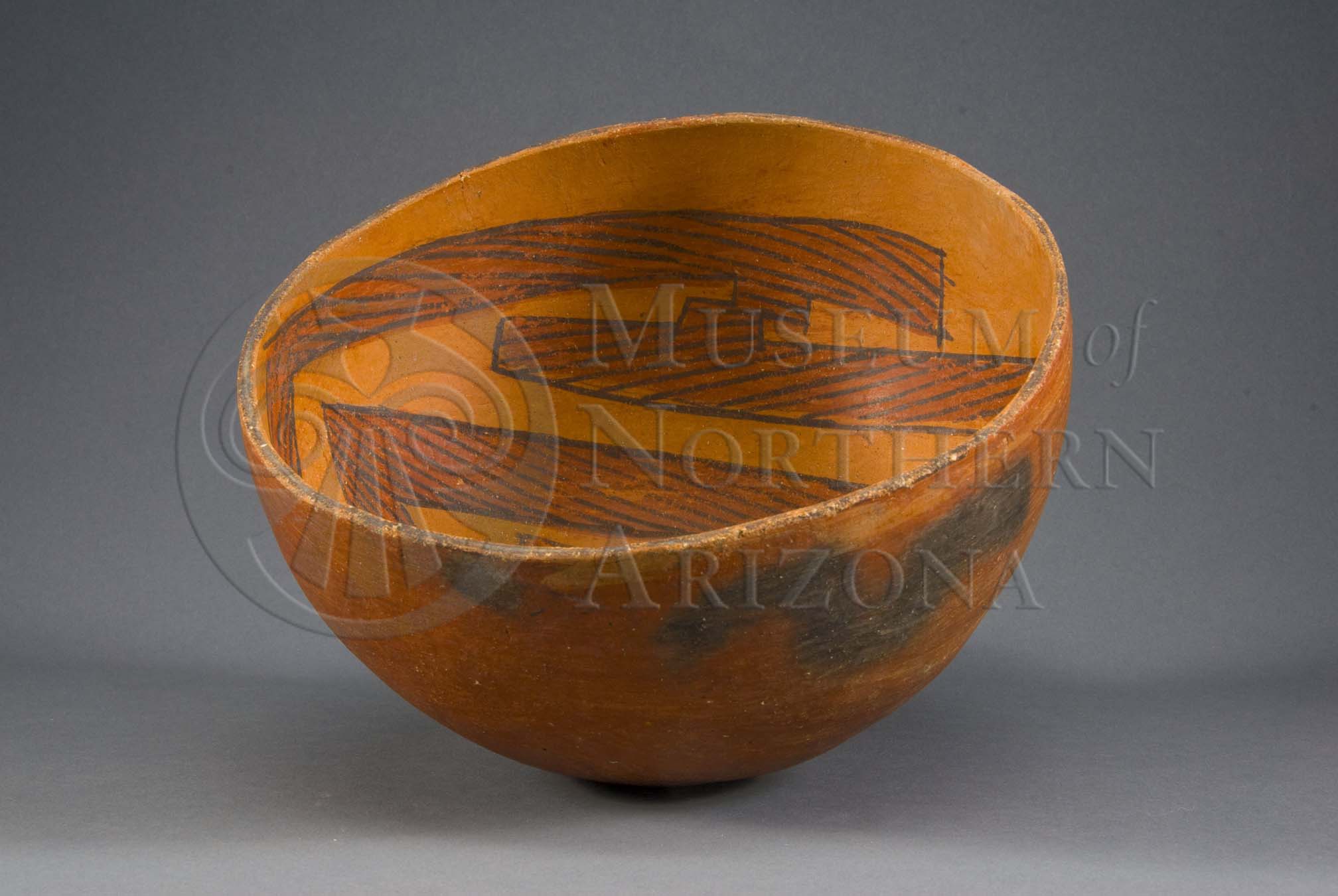
Cameron Polychrome bowl from the Museum of Northern Arizona collections. Click the image to open the Cameron Polychrome gallery.
Cameron Polychrome is a Tsegi Orange Ware type originally known at only a few sites around the San Francisco Peaks, but with a much broader geographical distribution than originally described.
Archaeological Culture: Ancestral Puebloan
Date Range
Kayenta Heartland: A.D. 1040-1170 (Christenson 1994); Flagstaff Region: A.D. 1075-1125 (per Christian Downum, Northern Arizona University).
Construction: By coiling.
Firing: In an oxidizing atmosphere.
Core Color: Gray.
Carbon Streak: Common.
Temper: Sand and sherd.
Surface Finish: Smooth and polished.
Surface Color: Buff or orange; outside of bowls covered with a red slip.
Forms: Bowls and jars.
Decoration:
- Paint: Black.
- Pigment: Manganese.
- Design: Style A: wide bands of red on which are painted hatchures in black; Style B: wide bands of red with intervening orange surfaces with hatchures in black.
Other Names: Citadel Polychrome.
Compiled from the following sources:
Christenson, Andrew. (1994) A Test of Mean Ceramic Dating Using Well-Dated Kayenta-Anasazi Sites. Kiva 59(3).
Colton, Harold. (1956) Pottery Types of the Southwest. Museum of Northern Arizona Ceramic Series No. 3. Flagstaff, Arizona
Compiled by:
April Peters, Northern Arizona University Anthropology Laboratories.
